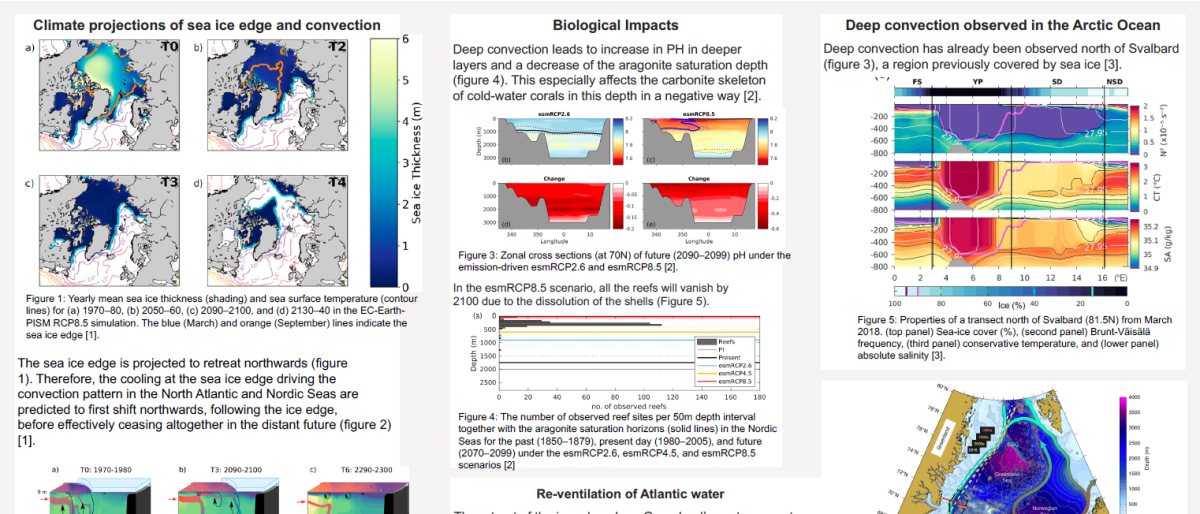Abstract
As the sea ice edge is retreating northwards, the deep convection in the north Atlantic and the Nordic Seas connected to the strong heat fluxes close to the sea ice edge, follows. Moreover, with the projected disappearance of sea ice in the Arctic in the recent future, the deep convection in the North Atlantic and Nordic Seas is projected to disappear. Currently, deep convection has been observed in an until recently ice covered region north of Svalbard. One of the many immediate consequences is acidification of the Nordic Seas due to the recent emergence of deep convection affecting cold water corals in this region. Conversely, as the ice cover is retreating towards the east coast of Greenland, currents previously insulated by sea ice are ventilated and densified as they flow southwards leading to new deep convection.
Poster number:
338_1
Authors:
Thorbjørn Østenby Moe
& Johanna Luise Rampmeier


